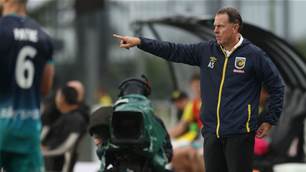With furore over stagnant W-League crowds, poor timeslots and difficult locations, we took a look at why FFA and W-League clubs make the choices they do.
Perth isn't alone. Western Sydney Wanderers play some games at Marconi Stadium rather than BankWest as it’s cheaper and more intimate with the intention of making the atmosphere better.
It’s also cheaper and better for Melbourne City and Victory to hire out suburban grounds such as Epping Stadium and ABD Stadium rather than AAMI Park.
W-League players themselves, like Erica Halloway and Ella Mastrantonio, have stated they like the small venues as much as the bigger ones due to the close proximity of fans.
Importantly, the priority for W-League clubs and players is that the money that is currently invested in female football is spent on players and the development of the game.
Not wasted on stadiums that are far too big for considering the lack of demand.
Ultimately, the lack of marketing in female football is a problem. But this is a problem with male football too.
The A-League doesn’t have a whole lot of ads on TV or talk shows either. Yet crowds are several times higher. The A-League crowds and TV audiences are still problematic though. They have decreased significantly over the last few years.
TV audiences for the A-League last year were 1.9 million. Average crowds this year are a tick over 10,300.
At the end of the day, fans need to vote with their feet and their eyeballs. If they do, the marketing and investment will come.
The Matildas started getting significantly greater mainstream recognition two years ago, after their stunning performance at the Tournament of Nations.
Their crowds have been good since then, with 20,000 turning up at BankWest Stadium earlier this year.
This increase in crowds and also TV audience meant FFA had little choice but to pay them more, hence the historic equal revenue share pay deal that was signed this year.
It’s in FFA’s interest for women’s football and specifically the W-League to succeed.
It's unlikely that FFA - or anyone with the best interests of football in mind - have any other intention than success for the W-League. It's not all about money, but if the W-League does succeed, the financial windfall is far greater than it operating on its current budget.
The decisions being made currently are mainly a result of circumstance.
Therefore, a large amount of pressure is heaped back upon the fans to continue to shift the boundaries by supporting businesses that fund female sport, and supporting the girls that play the game.
Related Articles

Stajcic lands Wanderers job as Lederer quits

Pelligra's $4m annual Perth Glory pledge seals takeover deal













